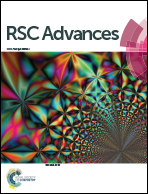Improvement of corrosion resistance and magnetic properties for sintered NdFeB by alumina sol-containing conversion film†
Abstract
Alumina film on NdFeB magnets is effective for improving the corrosion resistance and protecting the magnetic properties of the magnets, but the complicated preparation method limits its application. In this study, we prepare alumina-containing conversion film on NdFeB magnets using the reaction of NdFeB magnets with modified alumina sol at the interface. With the successful deposition of the alumina sol-containing conversion film (AS film), the corrosion current density value reduces by more than an order of magnitude and the intergranular corrosion is obviously suppressed in corrosive environment. The thermal stability and magnetic properties of NdFeB magnets are also improved by the AS film. The morphology, composition and structural optimization of the film are systematically investigated. Microstructural investigation suggests that the AS film is uniform and helps to repair defects on the NdFeB surface. Structure analyses reveal that the film is amorphous and protects the magnetic performance. In addition, the underlying mechanism for the formation of the AS film has been analyzed by zeta potential measurement and the potential of zero charge (Epzc) measurement at the sol–metal interface. These results have important implications for the preparation of no-magnetic-loss protection films on sintered NdFeB magnets.


 Please wait while we load your content...
Please wait while we load your content...